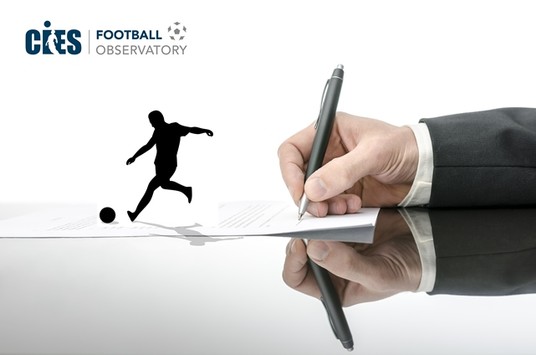CIES Football Observatory and Aspire Academy launch the first ever Asian Football Report
The CIES Football Observatory and Aspire Academy are pleased to disclose the first ever Asian Football Report. Unique of its kind, this publication should improve the knowledge on Asian football around the globe.
The first edition of the Asian Football Report analyses the squad composition of 130 clubs in nine of the best performing Asian leagues. These competitions are systematically compared to ten European championships of different sporting and economic levels.
The full report is available for free download here. It allows readers to compare Asian leagues between themselves, it also allows readers to draw comparisons between Asian football and the ‘big-5’ European leagues. By unveiling different statistics and comparing them on an international level, this report underlines multiple key football development aspects of major strategic importance.
The CIES Football Observatory & Aspire Academy Asian Football Report 2015 deals with six topics:
- Age: The average age in the best Asian leagues is similar to that measured in the five major European championships at around 26.5 years. However, Asian clubs rely on more seasoned players in attack than European teams. This is mainly related to the over-representation of experienced foreign footballers among strikers under contract with Asian teams. The training and development of forwards should be considered a priority in Asia.
- Stability: Squad stability in Asia is similar to that observed in the major European leagues. However, the discrepancies between countries are great. While players in Japan have been in their employer club for 3.5 years, this figure is only 1.8 years in Iran. The average stay of players in AFC Champions League clubs is 24% greater than for clubs in the Asian leagues surveyed who did not participate in the competition. This shows the importance of squad stability to raise performance standards.
- Foreign players: Foreign players make up a much more limited proportion of squads in the Asian leagues surveyed than in the European ones: 18% compared to 45%. This situation is related to the existence of restrictive quotas hindering the international mobility of footballers. Foreign footballers are over-represented in attacking positions. At Asian level, they account for 28.5% of forwards (up to 44.3% in China), 17.9% of midfielders, 13.3% of defenders and only 6.7% of goalkeepers.
- Internationals: Footballers having already played for a national A-team during their career account for 22.9% of squad members in the Asian leagues surveyed. This is less than half of the percentage measured in the big-5 European championships (50.7%). The Qatar Stars League gathers the highest percentage of full internationals at Asian level (30.9%). On average, AFC Champions League teams have 9.2 full internationals in their squad compared to 16.2 for UEFA Champions League clubs.
- Youth development: Nearly 23% of footballers in Asian leagues surveyed made their debut in the professional game in their club of employment, compared to less than 15% at big-5 European league level. The highest figures at club level were recorded at Pohang Steelers (62.6%) and Kashima Antlers (55.5%). The excellent results achieved by these teams show that putting the emphasis on the training and development of players is a valid strategy for clubs wishing to put themselves on the road to success.
- Recruitment: Asian clubs tend to sign players at an older age than European teams. This is particularly true with regard to foreign footballers. In the future, signing players at a younger age and keeping them for longer in the squad could be an effective measure for Asian teams to sustainably improve performance. This would indeed allow clubs to maintain both a sufficient level of squad stability and a balanced age structure over the long term.
Quotes
Markus Egger, Director of Strategy, Aspire Academy
"I am convinced that this report will inspire Asian clubs, leagues and national associations in order for them to be able to create the best possible environment allowing players to fully develop and exploit their potential. This will help to further raise the competiveness of Asian football as a whole. This is also the goal of Aspire Academy."
Raffaele Poli, Head of CIES Football Observatory
"This report is the fruit of an international partnership with the Qatari-based Aspire Academy. I see it as a milestone in the development of research on Asian football. The football landscape is every day more global and the CIES Football Observatory is very happy to partner with the Aspire Academy to expand the frontiers of its studies beyond Europe."
